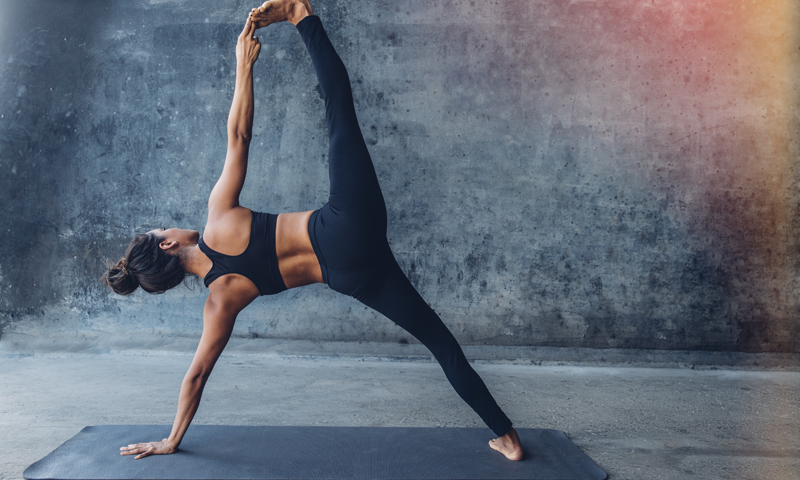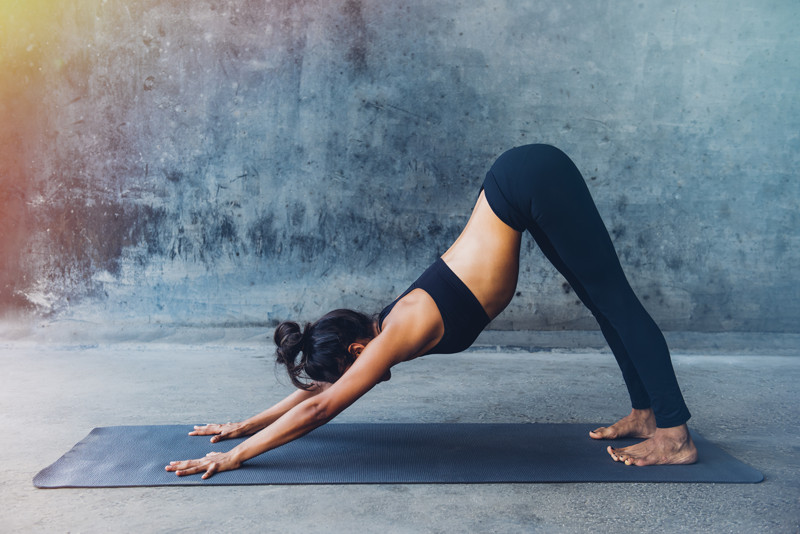
Best Yoga Breathing Exercises
16th February 2018
Find out more about Yoga Dance
23rd February 2018Yoga Maintenance for Hips

As we grow older, it’s no secret that our flexibility begins to decrease. For many people, one of the first areas they notice a change is within their hips. Densely constructed from a variety of ligaments, tendons, and muscles, our hips allow us to travel quickly, lift heavy objects, and move around with ease. With this in mind, it’s clear why a decrease in flexibility causes so many issues. Thankfully, it’s possible to maintain healthy hips by using yoga. In this article, we explore yoga maintenance for the hips in more detail. Before beginning, it’s worth picking up some flexible yoga pants to practice in.
Childs Pose
Gently stretching the hips, thighs, and ankles, Child’s Pose is great for increasing flexibility within the hips. Better still, the restorative pose works to soothe the body and mind. To practice Child’s Pose, kneel on the floor and sit back on your heels. Next, slowly move your forehead down towards the ground, resting it gently on the mat in front of your knees. Allow your arms to rest on the sides of your body. You should now be able to feel a deep stretch along your back. You are in Child’s Pose. Hold the pose for 30 seconds, breathing deeply to increase the stretch.
Boat Pose
Strengthening both the hips and abdominal muscles, Boat Pose is great for maintaining healthy hips. To practice Boat Pose, sit on your mat with your legs stretched out in front of you. Next, place your hands on the floor behind your hips, making sure that your fingers are pointing towards your feet. When you’re ready, press your palms into the floor as you straighten your arms. Keeping a straight back, lean your upper body back and raise your feet off the floor until your shins are parallel to the mat. Finally, extend your arms until they are in line with your shoulders. You are in Boat Pose. Hold the posture for 30 seconds before lowering your feet back down to the floor. To deepen the stretch, try drawing your chin into your chest.
Happy Baby Pose
Designed to bring a greater awareness to the hip joints, Happy Baby Pose is another popular posture for maintaining flexibility in the hips. Additionally, the restorative pose helps the muscles to relax, alleviating tightness throughout the body. To practice Happy Baby Pose, lie on your back and bring your knees into your chest. Next, grab hold of your feet and gently rock from side to side. The rocking motion is optional but is great for increasing the stretch in the hips. You are in Happy Baby Pose. Hold the posture for 30 seconds, or as long as it feels comfortable to do so.

Reclining Hand-to-Big-Toe Pose
Working to alleviate tension, Reclining Hand-to-Big-Toe Pose helps to increase flexibility in the hips. To practice the posture, start by lying flat on your back. Next, bend both knees and place the soles of your feet on the ground. Lift your right leg off the mat and slowly draw your knee towards your chest; if this is tricky, use your hands to gently guide the knee. Next, grab hold of the toes of your right foot and straighten the leg as much as possible. Finally, straighten your left leg and rest it down on the mat, keeping ahold of your right foot. You should feel a stretch through your hips and calf. You are in Reclining Hand-to-Big-Toe Pose. Hold the stretch for around 30 seconds before repeating on the opposite side.
Half Frog Pose
Half Frog Pose stretches the quadriceps, shins, and hips. To practice the posture, start by lying flat on your stomach. Next, bend your elbows and gently prop yourself up on your forearms, making sure that your arms are parallel to each other. Slowly turn your left arm until your fingertips point towards the top left corner of your mat. Next, bend your left knee and reach your left arm back to grab hold of your foot. You are in Half Frog Pose. To increase the stretch, gently draw your foot towards your buttocks. Hold the position for around 30 seconds before switching sides.
Easy Pose
Another restorative position, Easy Pose alleviates tension from the hips to promote flexibility. Before practising this posture, it’s important to have a firm blanket to hand. To practice Easy Pose, sit on the edge of your blanket with your back against a wall. Extend your legs out in front of you before crossing them at the shins. Next, place your left foot under your right knee and your right foot under your left knee. Your legs should now be crossed. Rest your hands gently on your knees. Ensure that your weight is balanced evenly across your sitting bones and that your head, neck, and spine are all in line. Finally, sit tall and relax your thighs. You are in Easy Pose. For best results, practice Easy Pose alongside a restorative pranayama. Hold the posture for around 1 minute before repeating the pose with your legs crossed the other way.
In Summary
Whether you’re hoping to restore flexibility within your hips or you’re more interested in preventing tightness from occurring in the future, practice the above postures regularly to reap the benefits. Before practising your new routine, it’s important to get your hands on a good-quality yoga mat; not only will this make the exercises more comfortable, but it will also prevent injury from occurring. If you are having difficulty with any of the poses, consider attending a local yoga class. Here, an experienced instructor will be able to advise you on the best way to practice.

